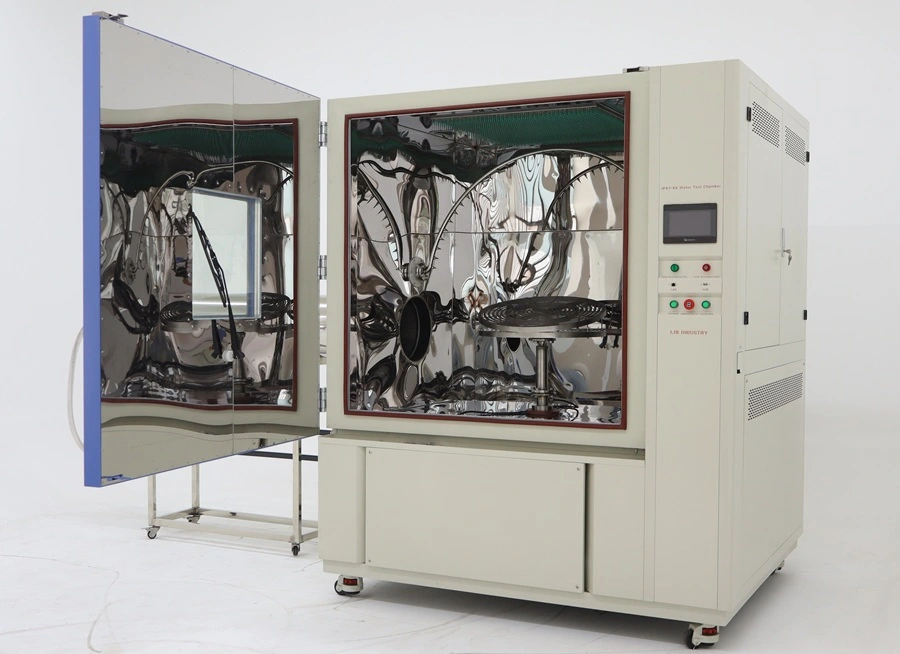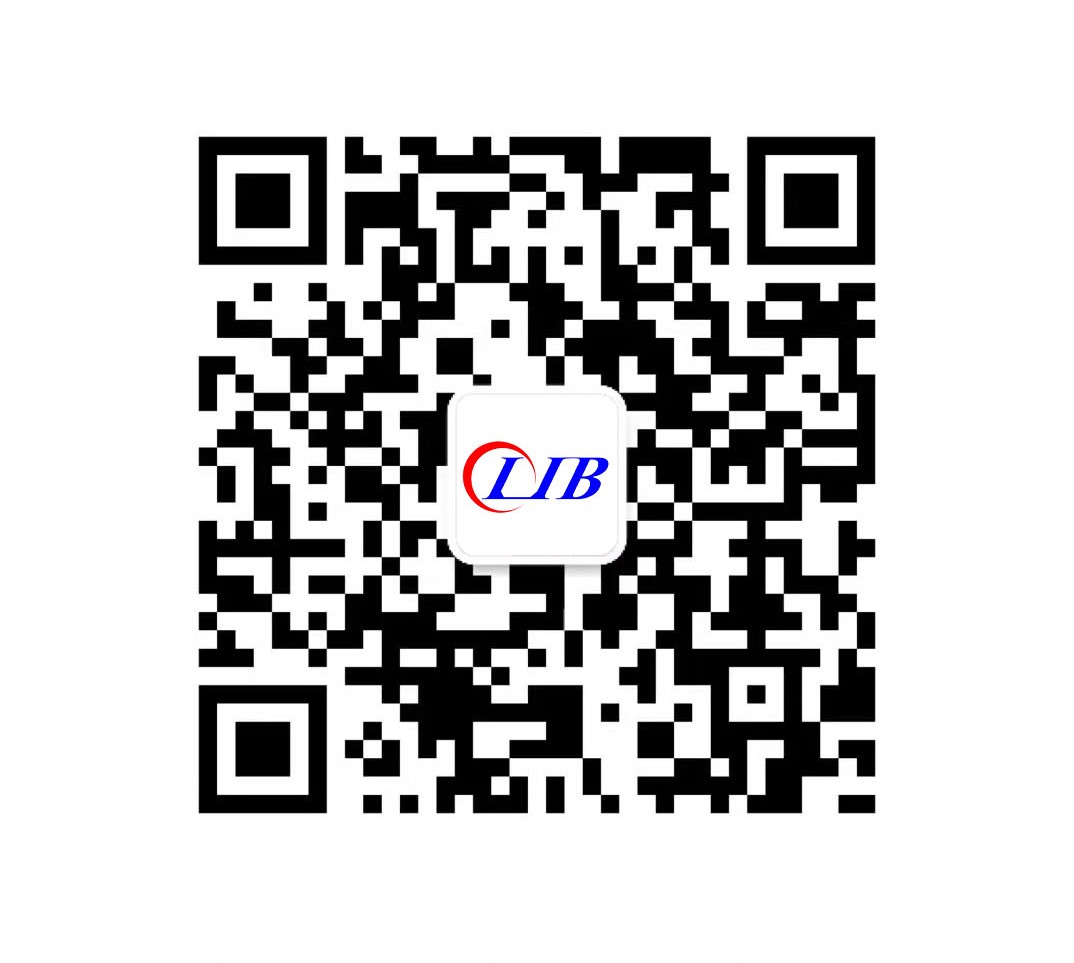Step-by-Step IPX9k Water Jet Testing Procedure
Step-by-Step IPX9k Water Jet Testing Procedure
The IPX9k water jet testing procedure evaluates equipment enclosures against extreme high-pressure, high-temperature water exposure. This rigorous assessment, conducted using IEC 60529 IPX9k equipment, involves mounting specimens on a rotating platform while subjecting them to precisely controlled water jets from multiple angles. Testing requires specialized equipment capable of delivering water at 8000–10000 kPa pressure and temperatures up to 88°C, with spray nozzles positioned 10–15 cm from the specimen. The complete procedure includes sample preparation, chamber configuration, parameter calibration, systematic rotation through defined angles, and detailed post-test evaluation to verify compliance with IEC 60529 standards.

Preparation of Test Samples and Chamber Setup
Specimen Selection and Pre-Test Inspection
Selecting appropriate test specimens requires careful consideration of product design, sealing mechanisms, and intended application environments. Samples should represent production-grade units rather than prototypes, ensuring that test results accurately reflect real-world performance. Visual inspection before testing identifies existing defects, manufacturing flaws, or damage that could compromise result validity. Documentation of initial conditions, including photographs and dimensional measurements, establishes baseline data for post-test comparison.
Mounting Configuration and Fixturing Requirements
Proper specimen mounting directly influences test accuracy and repeatability. The testing platform accommodates items weighing up to several kilograms, secured using custom fixtures that prevent movement during rotation. Fixtures must not obstruct critical surfaces or create artificial water barriers that could invalidate results. The 600mm diameter platform rotates at 5±1 r.p.m, requiring balanced load distribution to maintain consistent angular velocity throughout the test cycle.
Chamber Environment Verification
Before initiating testing, verify chamber cleanliness and operational readiness. The 1000L interior volume, constructed from SUS304 stainless steel, must be free from contaminants that could affect water quality or temperature control. Double-layer insulating glass observation windows allow visual monitoring while maintaining thermal stability. Electromagnetic door locks engage automatically, preventing accidental opening during high-pressure spray operations that could pose safety hazards.
Defining Spray Angle, Distance, and Pressure Requirements
Angular Configuration Standards
IPX9k testing mandates water jet application from four distinct angles: 0°, 30°, 60°, and 90°. Each angle exposes different enclosure surfaces, revealing potential ingress pathways through seams, joints, and mounting points. The 0° horizontal spray simulates direct lateral exposure, while 90° vertical spray replicates overhead deluge conditions. Intermediate angles assess vulnerability at compound surfaces where geometric complexity creates potential weak points.
Distance Parameters and Measurement Accuracy
Maintaining spray nozzle distance between 10-15 cm ensures consistent impact force across the specimen surface. When using IEC 60529 IPX9k equipment, distance variations beyond this tolerance range produce non-standard pressure distributions, invalidating test compliance. Precision measurement tools, including calibrated gauges and positioning templates, verify nozzle placement before each test sequence. Adjustable mounting brackets compensate for specimens of varying dimensions, maintaining standardized standoff distances regardless of product geometry.
Test Parameter | Standard Range | Tolerance |
Spray Distance | 10-15 cm | ±5 mm |
Water Pressure | 8000-10000 kPa | ±200 kPa |
Nozzle Dwell Time | 30 seconds | ±2 seconds |
Platform Speed | 5 r.p.m | ±1 r.p.m |
Pressure Calibration and Control Systems
Achieving pressure between 8000-10000 kPa requires sophisticated booster pump systems with precise flow regulation. Pressure transducers continuously monitor output, feeding data to programmable controllers that maintain setpoints throughout testing. The adjustable pressure range accommodates different standard requirements and product specifications. Regular calibration against certified reference standards ensures measurement traceability and result credibility across multiple test campaigns.
Temperature Control and Water Flow Regulation
Heating System Operation and Monitoring
High-temperature water delivery distinguishes IPX9k from lower-level ingress protection tests. Nichrome heating elements raise water temperature from ambient conditions to the specified 88°C maximum. Temperature control accuracy within ±2°C prevents thermal stress variations that could affect specimen material properties during testing. Programmable color LCD touch screen controllers display real-time temperature data, allowing operators to monitor thermal stability and adjust heating parameters as needed.
Flow Rate Standardization
Water flow rate between 14-16 L/min ensures adequate surface coverage while maintaining pressure specifications. Flow measurement devices, integrated into the water supply system, provide continuous monitoring and automatic adjustment. Insufficient flow creates dry spots where inadequate testing occurs, while excessive flow may exceed pressure limits or deplete water reservoir capacity prematurely. The closed-loop water recirculation system with purification components maintains flow consistency throughout extended test sequences.
Thermal Cycling Considerations
Temperature stabilization before specimen exposure on IEC 60529 IPX9k equipment prevents thermal shock effects that could produce misleading failure modes. Allowing 15–20 minutes for water temperature equilibration ensures uniform heating throughout the supply system. Specimens reaching thermal equilibrium with the chamber environment experience realistic temperature differentials representative of actual service conditions. Rapid temperature changes can cause temporary dimensional changes in enclosure materials, potentially creating artificial ingress pathways not present under normal operating conditions.
Component | Operating Range | Control Method |
Water Temperature | Ambient - 88°C | PID controller with nichrome elements |
Flow Rate | 14-16 L/min | Automated valve adjustment |
Heater Power | Variable | Touch screen programmable interface |
Rotation and Positioning of the Test Specimen
Platform Speed and Angular Velocity
The 5±1 r.p.m rotation speed ensures complete circumferential exposure to water jets from each configured angle. This deliberate rotation rate allows adequate dwell time for water penetration attempts at every surface orientation. Higher speeds might generate centrifugal forces that deflect water away from critical junctions, while slower speeds could produce excessive localized exposure inconsistent with standard requirements. Speed monitoring systems alert operators to deviations requiring adjustment.
Height Adjustment Capabilities
Vertical positioning flexibility between 200-400mm accommodates specimens with significantly different dimensions. Proper height adjustment aligns specimen centerlines with spray nozzle trajectories, ensuring consistent impact angles across product surfaces. Misalignment creates shadowed regions receiving inadequate exposure or excessive impact forces where direct spray concentration occurs. Measurement templates and alignment guides facilitate precise positioning before test initiation.
Multi-Position Testing Sequence
Each of the four spray nozzles operates for 30 seconds at its designated angle, creating a systematic exposure pattern. The complete test cycle involves specimen rotation through all positions while maintaining continuous spray from each angle. This sequential approach reveals angle-specific vulnerabilities that single-position testing might miss. Automated timing systems ensure precise duration control, eliminating human error in manual timing operations that could compromise result validity.
Criteria for Evaluating Water Ingress and Leakage
Visual Inspection Methodology
Post-test examination begins with careful enclosure disassembly following documented procedures that preserve evidence of water ingress pathways. Visual inspection identifies water traces, staining, or droplet accumulation on internal surfaces. Photography documenting internal conditions provides permanent records for compliance verification and quality assurance reviews. Inspection lighting techniques, including ultraviolet illumination of fluorescent tracer dyes added to test water, enhance detection of minute ingress quantities.
Quantitative Measurement Techniques
Volume measurement of collected water establishes ingress severity when protection failures occur. Graduated containers capture drainage from internal cavities, allowing precise quantification. Mass measurement before and after testing detects absorbed moisture in porous materials or trapped water in concealed spaces. These quantitative assessments support engineering analysis of failure mechanisms and corrective action development for design improvements.
Pass/Fail Determination Standards
IPX9k specifications prohibit any water ingress that could impair equipment functionality or compromise safety. Unlike lower protection levels permitting limited ingress, IPX9k demands absolute exclusion of high-pressure water penetration. Evaluation considers both visible water presence and functional testing of electrical components, mechanical systems, or other critical elements potentially affected by moisture exposure. Documentation requirements include detailed reports describing test conditions, observations, and compliance determinations.
Evaluation Criteria | Acceptable | Failure |
Internal Water Presence | None detected | Any visible water |
Electrical Function | Full operation maintained | Performance degradation |
Seal Integrity | No breach evidence | Visible water paths |
LIB Industry IEC 60529 IPX9k Equipment: Reliable Standard Compliance
Advanced Design Features
LIB Industry manufactures IEC 60529 IPX9k equipment incorporating sophisticated automation and safety systems that streamline testing while ensuring operator protection. The R9K-1200 model features electromagnetic door locks preventing accidental opening during pressurized operations, while over-temperature, over-current, and water shortage protection systems safeguard equipment and specimens. Ethernet-connected programmable controllers enable remote monitoring and data logging, supporting quality management system requirements for test documentation and traceability.
Customization and Application Flexibility
Manufacturing facilities benefit from customizable chamber configurations accommodating diverse product geometries and testing protocols. Interior volumes up to 1200L handle large automotive components, industrial enclosures, and outdoor equipment assemblies. Adjustable spray angles, pressure ranges, and temperature settings allow testing across various standards beyond basic IPX9k requirements. This versatility maximizes equipment utilization across different product lines and testing campaigns, improving return on capital investment.
Comprehensive Support Services
LIB Industry delivers complete turnkey solutions encompassing equipment design, manufacturing, commissioning, installation, and operator training. This comprehensive approach ensures testing facilities achieve operational readiness quickly while maintaining compliance with applicable standards. Ongoing technical support addresses maintenance requirements, calibration scheduling, and troubleshooting assistance. Global service availability supports manufacturers worldwide requiring certification testing for international market access.
Conclusion
IPX9k water jet testing requires meticulous attention to specimen preparation, equipment calibration, and evaluation procedures. Success depends on maintaining precise control over pressure, temperature, flow rate, and spray geometry throughout standardized test sequences. The procedure's complexity demands specialized equipment with sophisticated automation, safety systems, and monitoring capabilities. Manufacturers investing in proper testing infrastructure gain confidence in product performance under extreme environmental conditions, supporting market differentiation and regulatory compliance across demanding applications in automotive, industrial, and outdoor equipment sectors.
FAQs
How long does a complete IPX9k test cycle typically require?
A complete IPX9k test involves four spray angles at 30 seconds each, plus specimen rotation time between positions. Including setup, temperature stabilization, and post-test evaluation, most tests require 45-60 minutes. Complex specimens needing multiple mounting orientations may extend testing duration.
Can IPX9k testing damage functioning equipment or only reveal existing design weaknesses?
IPX9k testing applies extreme conditions exceeding normal service environments. Products lacking adequate ingress protection may experience water penetration during testing that wouldn't occur under typical use. Testing reveals design vulnerabilities requiring correction before market introduction, preventing field failures.
What distinguishes IPX9k from lower ingress protection ratings like IPX7 or IPX8?
IPX9k specifically addresses high-pressure, high-temperature water jet exposure at close range, simulating industrial cleaning or extreme weather conditions. Lower ratings test submersion or low-pressure spray. IPX9k represents the most stringent water ingress protection standard, requiring complete exclusion under harsh conditions.
As a leading manufacturer and supplier of IEC 60529 IPX9k equipment, LIB Industry provides comprehensive testing chamber solutions tailored to your certification requirements.



